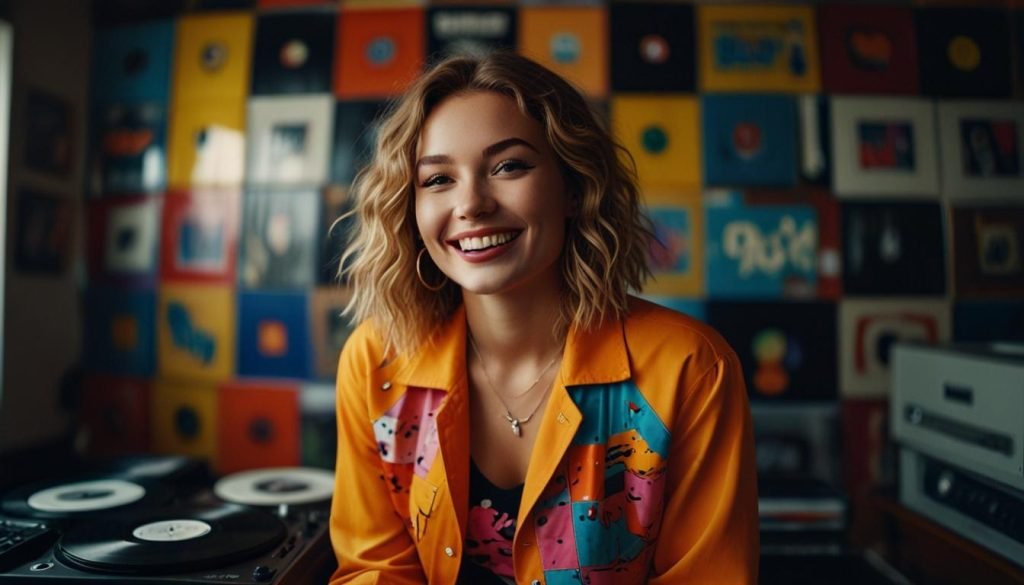A heartwarming exploration of how a parent’s nostalgia for 90’s fashion intertwines with their child’s self-expression and a shared love for music, highlighting cultural continuity and queer joy.
Revival of 90’s Fashion Trends Brings Together Past and Present Through Familial Bonding Over Music
This month marked a peculiar yet heartwarming moment as a parent watched their child embark on fifth grade, decked in fashion staples reminiscent of the 1990s. Despite the parent’s initial hesitation, rooted in their own experiences as a queer punk teenager, the connection forged through a shared love for music revealed an unexpected emotional solace.
As the fifth grader stepped out for school in a wardrobe featuring 90’s iconic fashion—such as slip dresses and jelly sandals—the parent’s feelings drifted between nostalgia and unease. For them, the 90s were not purely a fashion statement but a symbol of rebellion: dyeing clothes black, pegging jeans, and sewing patches with dental floss held deeper meanings amidst the era’s overwhelming compulsory femininity and personal struggles.
However, such complexities seem to lessen over time, as the parent now embraces their child’s sartorial self-expression. This transition was vividly illustrated on a school morning that began with a breakfast-time dance party to Chappell Roan’s “Pink Pony Club”. Echoing themes of drag queens and exploring different life perspectives, the song struck a chord not just with the child, a drag enthusiast, but also with the parent.
The emotional journey took the parent by surprise. Realising the joy and solidarity shared through this musical bond, the parent found peace in their child’s tribute to a decade that had once been laden with personal challenges. Witnessing the resurgence of 90s musical enjoyment, especially songs imbued with lesbian feelings, further solidified this newfound harmony.
Reflections of the past are strong, with the parent recalling the influence of musicians like Ani DiFranco and Tracy Chapman, whose works were seminal during their adolescence. The rediscovery of Chapman’s “Fast Car” and DiFranco’s raw lyrical sincerity—early tools of comfort—created a bridge from a turbulent teenage past to a more settled, understanding present.
Chappell Roan’s recent hit “Good Luck, Babe,” released in Spring, struck deeply. Described by the parent as a poignant, almost haunting pop piece, it reminisces the emotional depth found in Stevie Nicks’ “Silver Springs”. This song isn’t just about lost love and regret, but also resonates with the decades-old narrative of lesbian popular music, invoking the passion of Sophie B. Hawkins’ “Damn, I Wish I Was Your Lover” and the confident pleas of Melissa Etheridge’s “I’m the Only One” and k.d. lang’s “Constant Craving”.
Lang’s 1992 anthem arose during the AIDS crisis, emphasising queer longing as an indomitable force—the need for connection and courage, and the creation of new forms of identity. In a parallel spirit, Roan’s “Good Luck, Babe” stands resilient amid contemporary challenges against the LGBTQ+ community, such as “Don’t Say Gay” bills, transphobic regulations, and other suppressive policies.
Amidst these adversities, strong musical voices emerge, reminding both the oppressed and their oppressors of an unerring truth—that queer love and desire are forces beyond containment. As the parent dances in the kitchen with their ten-year-old, they contemplate future narratives and what sartorial decisions her generation might embrace next.
In sum, the tale of a parent and their child’s journey through fashion and music underscores a significant cultural continuity: the preservation and evolution of queer joy and expression. Despite the resumed struggles faced by the LGBTQ+ community, shared moments of dance, music, and love provide a resonant echo of hope from one generation to the next.
Source: Noah Wire Services





